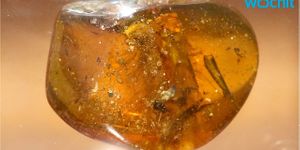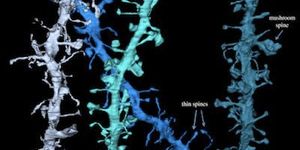'Virus-Like Particle' Method to Make new Polio Vaccines Proven Effective
'Virus-like particles' (VLPs) have been used to create effective vaccines for a number of viral threats including hepatitis B and human papilloma viruses. VLPs have been altered so they do not cause disease; they resemble viruses in many ways but do not contain viral genetic material. VLPs for poliovirus were once too unstable to be useful as vaccines for general use. Researchers working at the University of Leeds in the UK have engineered these VLPs so they are now stable enough for utilization as a polio vaccine. If you want to know more about what polio is, watch the video below from the Khan Academy.
VLPs often assemble like a virus, forming structures known as empty capsids, viral shells that in this case don't contain viral DNA. While they once changed shape when they got warm, rendering them useless as vaccines, the alterations introduced by the Leeds scientists have fixed that problem. The researchers believe this vaccine will be best for use after polio is eradicated.
While polio is very close to being totally eradicated globally, vaccinations will need to continue in order to keep it from reemerging as a threat to public health. Large amounts of vaccine are necessary for successful, large-scale vaccine production as well, so using a non-pathogenic method to manufacture vaccine will be far safer than using live virus, which presents an obvious health and security risk. These advances have been published in the open-access Journal of Virology.
"Continuing to vaccinate after polio has been eradicated is essential to ensure against the disease recurring, but there are significant biosafety concerns about current production methods," commented co-study leader David Rowlands, a Professor of Molecular Virology at the University.
"Our new method of creating the vaccine has been proven to work in lab conditions and on top of that we've proved it's actually more stable than existing vaccines. The improved stability of these modified VLPs means that they can be produced using bioengineering techniques without involving the growth of live virus".
The investigators have demonstrated that stabilized VLPs can be utilized effectively under controlled conditions. Additional research with model organisms like mice and rats will be necessary and is planned as an important part of crucial procedure of ensuring the safety and efficacy of these new VLPs for use in people.
"The international drive to eradicate polio using existing vaccines continues, but methods need to be found to maintain vaccination safely as insurance after it appears to have been eradicated. This is when our approach will come into its own," said the co-study leader, Professor Nicola Stonehouse of the University of Leeds.
"Further research is needed to refine them more but we are confident they will work for all three forms of polio. After that we need to find a way to manufacture them cost effectively on a large scale," she concluded.
If you would like to learn more about VLPs, check out the video above featuring Professor Anton Middelberg of the Australian Institute for Bioengineering & Nanotechnology at The University of Queensland.
Sources: AAAS/Eurekalert via University of Leeds, Journal of Virology








